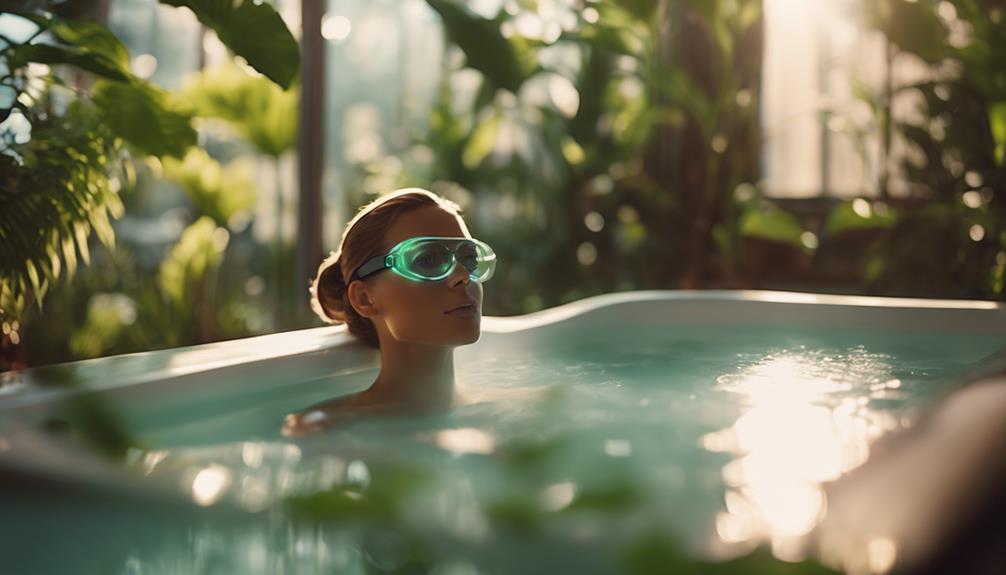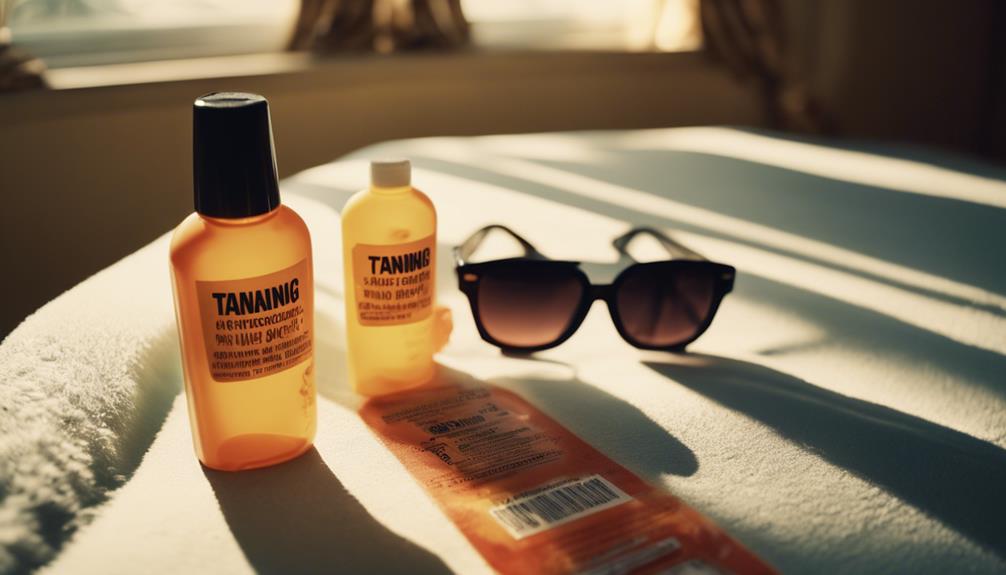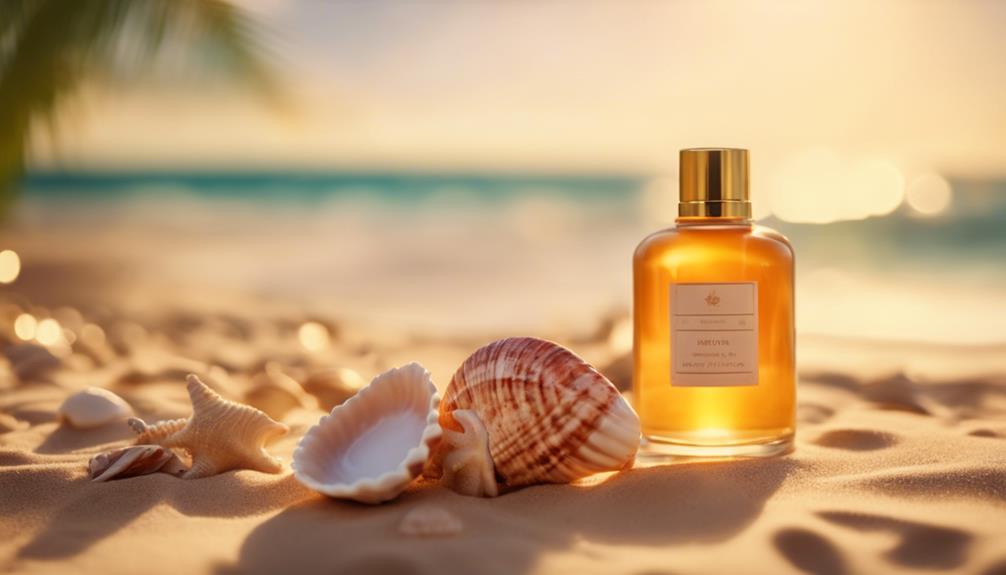Tanning beds can seriously harm your eyes, so protecting them is vital. Always wear UV-blocking goggles designed for tanning; regular sunglasses won't cut it. Make sure the goggles fit snugly for proper coverage and check them for damage before each use. After tanning, wear UV-blocking sunglasses outdoors, and consider using moisturizing eye drops if you feel irritation. Don't forget to clean your goggles after each session to prevent any bacteria buildup. By following these essential tips, you can enjoy your tan while keeping your eyes safe and healthy. There's so much more to explore about eye protection you won't want to miss!
Key Takeaways
- Always wear FDA-approved UV-blocking goggles during tanning sessions to protect your eyes from harmful UV rays.
- Ensure goggles fit snugly and cover your eyes completely to prevent any UV exposure gaps.
- Clean and sanitize goggles after each use to avoid bacteria buildup and maintain eye safety.
- Use moisturizing eye drops post-tanning to soothe any irritation and protect your eye health.
Eye Safety Risks
When you step into a tanning bed, your eyes face serious risks from harmful UV exposure that can lead to conditions like cataracts and even cancer. Tanning beds emit UV levels that can be up to 100 times stronger than natural sunlight, increasing your risk of developing painful photokeratitis.
Prolonged exposure without proper eye protection escalates the chance of severe long-term damage, including uvea cancer. It's essential to recognize that skipping eye protection isn't just a minor oversight; it can result in significant eye harm.
If you want to enjoy tanning while safeguarding your vision, understanding these risks is the first step. Always prioritize your eye health to prevent lasting consequences from UV exposure during tanning sessions.
Importance of Goggles
Wearing UV-blocking goggles during tanning sessions is vital for protecting your eyes from harmful UV rays. Tanning beds emit UV levels up to 100 times stronger than natural sunlight, increasing your risk of serious eye conditions like cataracts and photokeratitis.
Regular sunglasses won't cut it; you need FDA-approved goggles designed specifically for tanning. Make certain your goggles fit snugly to prevent slippage and guarantee complete coverage, as any gaps can expose your eyes to damaging UV light.
Consistently using goggles during each session is essential for maintaining your long-term eye health. Don't take chances with your vision; prioritize your eye protection every time you step into a tanning bed. Your eyes deserve it!
Goggle Usage Tips
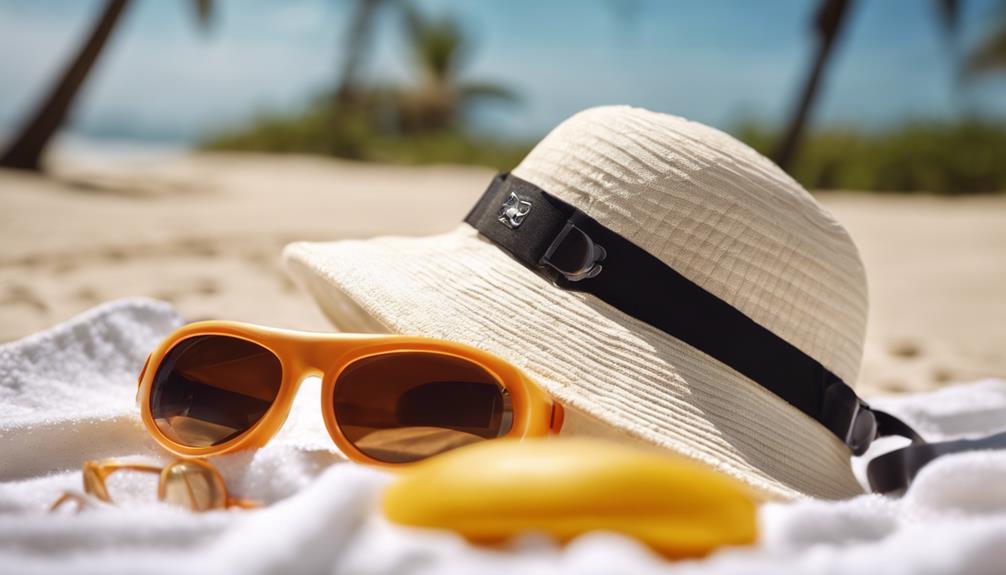
Always guarantee your UV-blocking goggles fit snugly to maximize protection against harmful UV rays during tanning sessions.
Ascertain they cover your eyes completely without leaving any gaps, as this will prevent tan lines and potential UV exposure.
Before each session, check for any damage or wear that could compromise their effectiveness. If you're using borrowed goggles, sanitize them thoroughly to avoid infections.
Maintain a consistent routine by wearing your goggles every time you tan, as skipping this step can lead to serious eye damage.
If you feel any discomfort or irritation during your session, address it immediately by adjusting your goggles or consulting a professional.
Your eye health is paramount, so always prioritize proper goggle usage.
Goggle Maintenance Practices
To guarantee your UV-blocking goggles remain effective, clean and sanitize them after each use to prevent the buildup of harmful bacteria.
Use a gentle soap and water solution or a germ-fighting product provided by your tanning salon. Make sure to wipe down the lenses and straps thoroughly.
After cleaning, let them air dry completely before storing them in a cool, dry place.
Regularly check the elastic bands for wear and tear, replacing them if they become loose or damaged for ideal fit.
If you share goggles or use borrowed ones, always sanitize them beforehand.
These simple maintenance practices will keep your goggles in top condition, ensuring you get the best protection during your tanning sessions.
Post-Tanning Eye Care
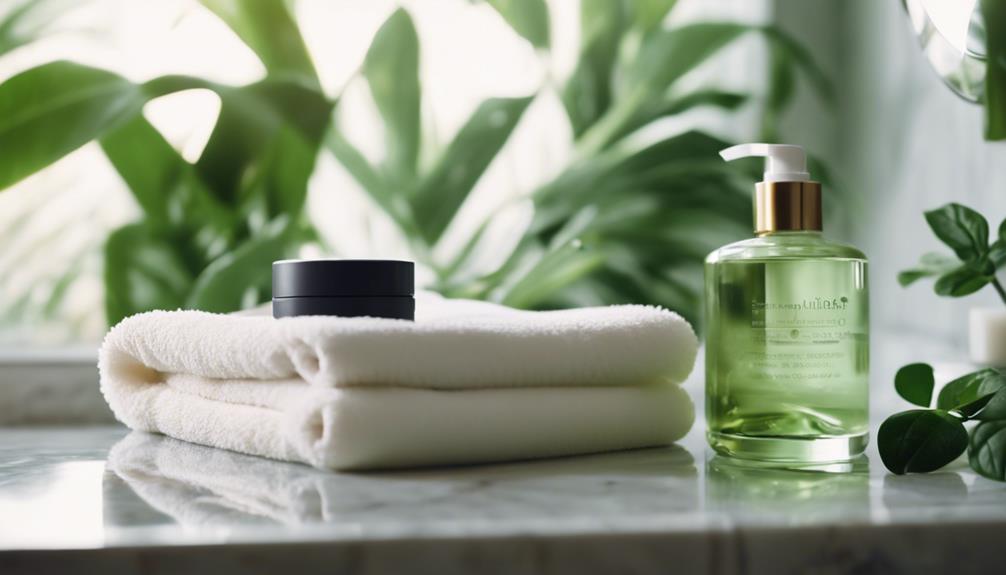
After your tanning session, it is vital to protect your eyes from any lingering UV exposure. Immediately wear UV-blocking sunglasses to shield your eyes, and consider using moisturizing eye drops to soothe any irritation. A brimmed hat offers extra protection when you're outdoors. Regular eye exams are important for catching any potential damage early.
| Action | Purpose | Frequency |
|---|---|---|
| Wear UV-blocking sunglasses | Protects from residual UV rays | Every time outdoors |
| Use moisturizing eye drops | Soothes irritation | After tanning |
| Wear a brimmed hat | Provides additional UV coverage | Whenever outside |
| Schedule eye exams | Detects potential damage | At least once a year |
Taking these steps helps maintain your eye health long after your tanning session.
Common Misconceptions
Misunderstandings about eye safety when using tanning beds can lead to severe risks, highlighting the importance of proper protection during sessions.
Many people believe that simply closing their eyes or wearing regular sunglasses is enough to shield their eyes. This isn't true; those actions offer minimal protection against harmful UV rays.
Tanning beds emit UV levels much higher than natural sunlight, and without appropriate eyewear, you risk serious eye damage, including corneal burns and increased chances of cataracts.
It's also a misconception that you can safely skip goggles for short tanning sessions; even brief exposure can be harmful.
Always prioritize your eye safety by using FDA-approved UV-blocking goggles during every tanning session. Your eyes deserve the best protection.
Safer Tanning Alternatives
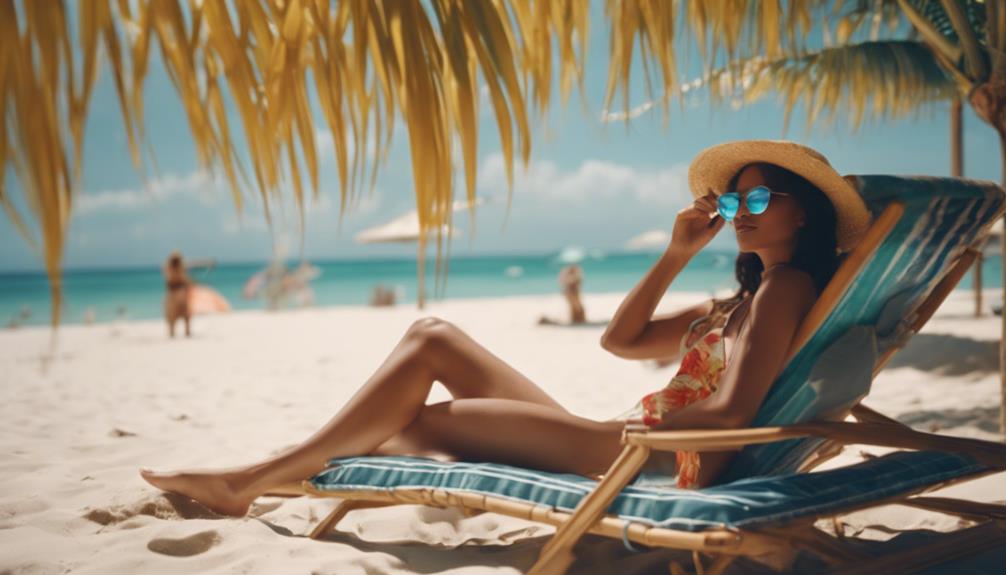
Many people often seek safer tanning alternatives that minimize the risks associated with UV exposure while still achieving a bronzed look.
Self-tanning products, like lotions and sprays, offer a quick and effective way to get that sun-kissed glow without harmful UV rays. Look for products with dihydroxyacetone (DHA), which reacts with your skin to create a natural tan.
Additionally, consider bronzing powders or tinted moisturizers for a temporary glow. If you prefer a professional touch, visit a spray tanning salon, where trained technicians can apply the product evenly.
Frequently Asked Questions
Can I Tan Without Goggles for a Shorter Session?
No, you shouldn't tan without goggles, even for a shorter session. Your eyes are vulnerable to harmful UV rays, and skipping protection increases the risk of serious damage. Always prioritize eye safety during tanning.
Are There Specific Brands of Goggles Recommended for Tanning?
Imagine slipping into a sunlit oasis, but don't forget your goggles! Brands like EyePro and Smart Tan offer FDA-approved options, ensuring your eyes stay shielded from harmful rays while you bask in that golden glow.
How Often Should I Replace My Tanning Goggles?
You should replace your tanning goggles every six months or sooner if they show signs of wear. Regularly check for scratches or damage, as these can reduce their effectiveness in protecting your eyes during tanning sessions.
Do Tanning Beds Cause Immediate Eye Damage?
Imagine lying under bright lights, warmth enveloping you, yet those rays can harm your eyes instantly. Tanning beds can cause immediate damage like corneal burns, so always wear goggles to shield your precious vision.
Can I Share My Goggles With Someone Else?
You shouldn't share your goggles with anyone. Each person's eye health is unique, and sharing can lead to infections or inadequate protection. Always use your own properly fitted goggles for safe tanning sessions.
Conclusion
As you bask in the glow of that tanning bed, remember your eyes deserve just as much care as your skin.
Don't let your vision take a backseat while you chase the perfect tan—rock those UV-blocking goggles like a boss!
With proper eye protection, you can shine bright without risking your sight.
So, before you hit that button, gear up and guarantee your eyes are safe—because nobody wants to trade their vision for a sun-kissed glow!
